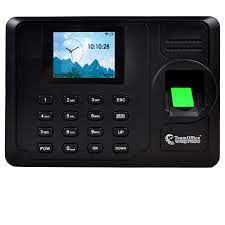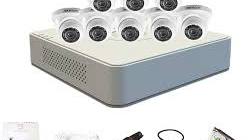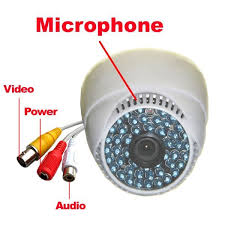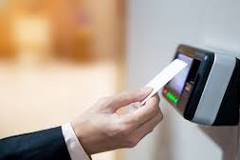Attendance Biometric Machine: A Modern Solution for Efficient Workforce Management
In today’s fast-paced business world, efficient workforce management is crucial for the success and productivity of any organization. One of the key aspects of effective workforce management is accurate and reliable attendance tracking. This is where attendance biometric machines come into play.
Gone are the days of manual attendance registers or swipe cards that can easily be manipulated or forgotten. Attendance biometric machines have revolutionized the way organizations track employee attendance by leveraging advanced biometric technology.
So, what exactly is an attendance biometric machine? It is a device that uses unique physiological or behavioral characteristics of individuals to accurately verify their identities and record their attendance. Common types of biometric identifiers used in these machines include fingerprints, facial recognition, iris scans, and palm prints.
One of the major advantages of using an attendance biometric machine is its high level of accuracy. Each individual’s unique biological traits serve as foolproof identification markers, virtually eliminating the possibility of fraudulent practices such as buddy punching (when employees clock in for absent colleagues). This ensures that organizations have an accurate record of employee attendance, which in turn helps in fair payroll management and reduces labor costs.
Additionally, attendance biometric machines offer unparalleled convenience. Employees no longer need to carry around ID cards or remember PINs; they simply need to scan their fingerprint or face to mark their presence. This not only saves time but also eliminates any hassles associated with lost or misplaced cards.
Furthermore, these machines provide real-time data and reporting capabilities. Supervisors and HR personnel can access up-to-date information on employee attendance effortlessly. This allows them to identify patterns such as late arrivals or excessive absences promptly, enabling proactive measures to address any issues.
Another significant advantage of using attendance biometric machines is enhanced security. Biometric identifiers are unique to each individual and cannot be replicated easily, making it extremely difficult for unauthorized personnel to gain access to restricted areas. This helps organizations maintain a secure and controlled work environment.
Moreover, attendance biometric machines are user-friendly and easy to integrate into existing systems. They can be seamlessly integrated with payroll software or HR management systems, simplifying the entire attendance tracking process. These machines also come with user-friendly interfaces, making them accessible to employees of all levels of technical proficiency.
It is worth mentioning that privacy concerns related to biometric data are taken into consideration when implementing attendance biometric machines. Organizations must adhere to strict data protection protocols and ensure that collected biometric information is securely stored and used solely for attendance purposes.
In conclusion, attendance biometric machines have transformed the way organizations manage their workforce. With their high accuracy, convenience, real-time reporting capabilities, enhanced security features, and ease of integration, these machines provide a modern solution for efficient attendance tracking. By adopting this technology, organizations can streamline their operations, improve productivity, and ensure fair and accurate workforce management.
6 Essential Tips for Effective Use of Attendance Biometric Machines
- Ensure that the biometric machine is installed in a secure location.
- Make sure to have a backup system for the biometric machine in case of power failure or other technical issues.
- Regularly update the software and firmware of the biometric machine to ensure its accuracy and security.
- Ensure that all employees are aware of how to use the biometric machine properly, including any safety protocols such as not touching it with wet hands or using it while wearing gloves.
- Regularly clean and disinfect the surface of the biometric machine, especially after each use by an employee, to prevent transmission of germs and viruses from one person to another through contact with it.
- Set up a system for regularly checking that data from the biometric machine is being accurately recorded and stored securely on your company’s servers or other storage mediums, so you can access attendance records at any time if needed for payroll purposes or other purposes related to tracking employee attendance accurately
Ensure that the biometric machine is installed in a secure location.
When implementing an attendance biometric machine in your organization, one crucial tip to keep in mind is to ensure that the machine is installed in a secure location. The security of the installation site plays a significant role in maintaining the integrity and effectiveness of the biometric system.
First and foremost, choose a location that is easily accessible for employees but still restricts unauthorized access. Ideally, it should be situated in a controlled area such as an entrance or lobby where employees can conveniently clock in and out. This helps prevent any tampering or misuse of the machine by unauthorized individuals.
Secondly, consider installing the biometric machine in an area with adequate lighting conditions. Proper lighting ensures clear visibility of the employee’s biometric features during the verification process, reducing errors and enhancing accuracy.
Additionally, it is essential to protect the machine from physical damage or theft. Install security measures such as surveillance cameras or alarms to deter any potential threats. If possible, choose a location that can be monitored by security personnel to provide an extra layer of protection.
Moreover, ensure that the installation site is free from environmental factors that may affect the performance of the biometric machine. Avoid placing it near sources of heat, direct sunlight, or excessive moisture as these can potentially damage the device or interfere with its functionality.
Lastly, implement strict access controls for individuals who have permission to handle or maintain the biometric machine. Limit access only to authorized personnel who are trained in operating and maintaining such systems. This reduces the risk of unauthorized modifications or tampering with sensitive data.
By following these guidelines and ensuring that your attendance biometric machine is installed in a secure location, you can enhance its reliability and effectiveness. A secure installation site not only safeguards your investment but also ensures accurate attendance tracking and promotes trust among employees regarding their personal data privacy and security.
Make sure to have a backup system for the biometric machine in case of power failure or other technical issues.
Ensuring Uninterrupted Attendance Tracking: The Importance of a Backup System for Biometric Machines
In today’s technologically advanced world, attendance biometric machines have become an integral part of efficient workforce management. These devices offer accurate and reliable attendance tracking through the use of unique biometric identifiers. However, it is essential to consider potential disruptions that could occur, such as power failures or technical issues. To ensure uninterrupted attendance tracking, it is crucial to have a backup system in place.
Power failures can happen unexpectedly and can disrupt the functioning of any electronic device, including attendance biometric machines. Without a backup system, organizations may face challenges in accurately recording employee attendance during such instances. This can lead to discrepancies in payroll management and hinder overall workforce productivity.
To mitigate the risks associated with power failures or technical glitches, having a backup system for biometric machines is highly recommended. Here are some key reasons why this precautionary measure is essential:
- Continuity of Operations: A backup system ensures that attendance tracking remains operational even during power outages or technical issues. This allows organizations to maintain accurate records and prevent any disruptions in payroll processing or workforce management.
- Data Integrity: With a backup system in place, organizations can safeguard the integrity of attendance data. In the event of a power failure or technical glitch, data captured by the biometric machine up until that point will be securely stored and readily available once operations resume. This ensures that there are no gaps or inconsistencies in attendance records.
- Employee Trust and Fairness: Having a backup system demonstrates an organization’s commitment to fair employee treatment and accurate record-keeping. Employees can trust that their attendance will be accurately recorded regardless of any unforeseen circumstances, fostering transparency and fairness within the workplace.
- Compliance Requirements: In certain industries or regions, there may be legal or regulatory requirements regarding employee attendance tracking and record-keeping. Having a backup system for biometric machines helps organizations meet these compliance obligations and avoid potential penalties or legal issues.
Implementing a backup system for biometric machines can be achieved through various means. One common approach is to have an uninterruptible power supply (UPS) connected to the machine. A UPS acts as a temporary power source during outages, allowing the biometric machine to continue functioning until regular power is restored.
Additionally, organizations can consider implementing redundant systems or alternative methods of attendance tracking, such as manual registers or temporary card-based systems, as backup options. These alternatives ensure that attendance records are accurately maintained even when the primary biometric system is temporarily unavailable.
In conclusion, while attendance biometric machines offer accurate and convenient workforce management solutions, it is crucial to prepare for unforeseen disruptions. Having a backup system in place ensures uninterrupted attendance tracking, data integrity, employee trust, compliance with regulations, and overall operational continuity. By investing in a backup system for biometric machines, organizations can mitigate risks and confidently manage their workforce even during challenging situations.
Regularly update the software and firmware of the biometric machine to ensure its accuracy and security.
Regularly Updating Software and Firmware: Ensuring Accuracy and Security of Attendance Biometric Machines
In the ever-evolving world of technology, it is crucial to stay updated with the latest advancements to maximize the efficiency and security of our systems. This principle applies to attendance biometric machines as well. Regularly updating the software and firmware of these machines is essential to ensure their accuracy and security.
Software updates are designed to enhance the functionality of the attendance biometric machine. They often include bug fixes, performance improvements, and additional features that can optimize the overall user experience. By keeping the software up to date, organizations can ensure that their biometric machines are running smoothly and efficiently.
Moreover, software updates play a vital role in addressing potential security vulnerabilities. Cyber threats are constantly evolving, and hackers are continuously finding new ways to exploit vulnerabilities in systems. By promptly installing software updates, organizations can patch any identified security loopholes, thus strengthening the overall security posture of their attendance biometric machines.
Firmware updates, on the other hand, focus on improving the internal operations of the biometric machine itself. These updates typically address hardware compatibility issues, optimize system performance, and introduce new functionalities specific to the device’s hardware components.
Regularly updating firmware is crucial for maintaining accurate attendance records. As technology advances, manufacturers often discover ways to improve biometric recognition algorithms or enhance sensor capabilities. By applying firmware updates promptly, organizations can ensure that their attendance biometric machines accurately capture employees’ unique identifiers such as fingerprints or facial features.
Furthermore, firmware updates may also address any known issues related to data storage or communication protocols between the machine and other systems within an organization’s network. This helps prevent potential data loss or connectivity problems that could hinder smooth operations.
To keep attendance biometric machines up to date with software and firmware updates effectively, organizations should establish a structured update management process. This process may involve periodically checking for available updates from manufacturers’ websites or setting up automatic update notifications.
It is important to note that when performing updates, organizations should follow the manufacturer’s instructions carefully. This includes ensuring that the updates are obtained from trusted sources and are compatible with the specific model of the biometric machine in use.
In conclusion, regularly updating the software and firmware of attendance biometric machines is essential for maintaining their accuracy and security. By staying up to date with the latest advancements, organizations can benefit from enhanced functionality, improved performance, and strengthened security measures. Embracing this practice will ensure that attendance biometric machines continue to provide reliable and efficient workforce management solutions in an ever-changing technological landscape.
Ensure that all employees are aware of how to use the biometric machine properly, including any safety protocols such as not touching it with wet hands or using it while wearing gloves.
Ensuring Proper Usage of Attendance Biometric Machines: A Crucial Step for Effective Implementation
Implementing attendance biometric machines in your organization can greatly streamline the attendance tracking process and enhance workforce management. However, it is essential to ensure that all employees are well-informed about how to use these machines properly, including any safety protocols associated with their usage.
First and foremost, it is crucial to educate employees on the correct procedure for using the biometric machine. This may involve providing clear instructions on how to place their finger or position their face correctly for accurate identification. By familiarizing employees with the proper usage techniques, you can minimize errors and ensure that attendance records are reliable and consistent.
Moreover, safety protocols should be communicated clearly to all employees. For instance, it is important to emphasize that wet hands should not come into contact with the biometric machine. Moisture can interfere with the scanning process and potentially damage the device. Encouraging employees to dry their hands thoroughly before using the machine will help maintain its functionality and longevity.
Additionally, if your organization requires employees to wear gloves as a part of their work environment, it is essential to inform them about the proper procedure for using the biometric machine while wearing gloves. Some machines may have specific settings or features that accommodate glove usage, while others may require users to remove their gloves temporarily for accurate scanning. Ensuring that employees are aware of these guidelines will prevent any inconvenience or potential damage caused by improper usage.
Regular reminders and training sessions can be beneficial in reinforcing these usage guidelines. By periodically reminding employees about proper usage techniques and safety protocols, you can maintain a consistent understanding across your workforce.
In conclusion, ensuring that all employees are aware of how to use attendance biometric machines properly is vital for effective implementation. By providing clear instructions on correct usage techniques and communicating any safety protocols associated with these devices, organizations can maximize accuracy in attendance tracking while safeguarding the functionality of biometric machines. Empowering employees with the knowledge to utilize these machines correctly will contribute to the overall success of your attendance management system and promote a smooth and efficient work environment.
Regularly clean and disinfect the surface of the biometric machine, especially after each use by an employee, to prevent transmission of germs and viruses from one person to another through contact with it.
Maintaining Hygiene: Cleaning and Disinfecting Your Attendance Biometric Machine
In the wake of the ongoing global health crisis, maintaining hygiene has become a top priority for individuals and organizations alike. When it comes to attendance biometric machines, regular cleaning and disinfection are essential to prevent the transmission of germs and viruses from one person to another through contact with the machine’s surface.
Attendance biometric machines are commonly used by multiple employees throughout the day, making them potential hotspots for the accumulation and spread of harmful pathogens. To ensure a safe and healthy work environment, it is crucial to incorporate proper cleaning and disinfection practices into your routine.
Start by familiarizing yourself with the manufacturer’s guidelines for cleaning your specific attendance biometric machine. These guidelines often provide valuable information on suitable cleaning agents, recommended frequency of cleaning, and specific areas that require attention.
When it comes to choosing a cleaning agent, opt for a mild detergent or an alcohol-based solution that is safe for use on electronic devices. Avoid using abrasive cleaners or harsh chemicals that may damage the machine’s surface or compromise its functionality.
Begin by powering off the attendance biometric machine and disconnecting it from any power source before initiating the cleaning process. Gently wipe down the surface of the machine using a soft cloth or sponge dampened with the chosen cleaning agent. Pay close attention to areas that come into direct contact with users’ fingers or faces, such as fingerprint scanners or facial recognition sensors.
For more thorough disinfection, you can use disinfectant wipes specifically designed for electronic devices. These wipes are pre-moistened with an appropriate disinfectant solution and can effectively eliminate germs without causing harm to sensitive components.
Remember to clean not only the visible surfaces but also any crevices or hard-to-reach areas where dirt or contaminants may accumulate over time. Take care not to allow any liquid to seep into openings or ports that could damage the internal components of the machine.
Develop a regular cleaning schedule that aligns with the frequency of use and the number of individuals interacting with the attendance biometric machine. Ideally, it is recommended to clean and disinfect the machine after each use by an employee, but at a minimum, aim for daily cleaning to maintain optimal hygiene standards.
By incorporating these simple yet crucial cleaning and disinfection practices into your routine, you can help prevent the transmission of germs and viruses through contact with your attendance biometric machine. Prioritizing hygiene not only promotes a healthy work environment but also ensures peace of mind for both employees and employers during these challenging times.
Set up a system for regularly checking that data from the biometric machine is being accurately recorded and stored securely on your company’s servers or other storage mediums, so you can access attendance records at any time if needed for payroll purposes or other purposes related to tracking employee attendance accurately
Setting up a Robust Data Management System for Attendance Biometric Machines
In today’s digital age, attendance biometric machines have become an integral part of efficient workforce management. These devices offer accurate and reliable attendance tracking, ensuring fair payroll management and aiding in various other purposes related to tracking employee attendance accurately. However, it is crucial to establish a system for regularly checking the accuracy of recorded data and ensuring its secure storage.
To begin with, it is essential to verify that the data from the biometric machine is being accurately recorded. Regularly check the machine’s settings and configurations to ensure that it captures attendance information correctly. This includes verifying that the correct biometric identifiers (such as fingerprints or facial recognition) are being used, and that employees are following proper procedures while using the machine.
Once the data is recorded by the biometric machine, it is crucial to store it securely on your company’s servers or other storage mediums. Implement robust security measures such as encryption protocols and restricted access rights to protect sensitive attendance data from unauthorized access or tampering.
Regularly perform backups of the attendance data to prevent any loss due to technical failures or system errors. These backups should be stored in secure locations and tested periodically to ensure their integrity.
Implement a system for monitoring and auditing the stored data periodically. This involves cross-checking attendance records against other sources of information like shift schedules or leave applications. By doing so, any discrepancies or anomalies can be identified promptly and addressed accordingly.
Consider implementing a centralized attendance management system that integrates with your biometric machines. This allows you to access attendance records at any time if needed for payroll purposes or other purposes related to accurately tracking employee attendance. Such systems often provide comprehensive reporting features, making it easier for HR personnel to generate attendance reports as required.
Regularly train your HR personnel on how to effectively use and manage the attendance biometric machines and associated data management systems. This ensures that they are well-equipped with the knowledge and skills to handle any issues that may arise and maintain the integrity of attendance records.
Lastly, it is important to comply with relevant data protection regulations and guidelines while managing attendance data. Ensure that you have obtained necessary consent from employees for collecting and storing their biometric information, and adhere to strict privacy policies to safeguard their rights.
By setting up a robust system for regularly checking the accuracy of recorded data and securely storing it, organizations can ensure that attendance biometric machines serve their intended purpose effectively. This not only helps in fair payroll management but also provides a reliable source of information for various purposes related to tracking employee attendance accurately.




